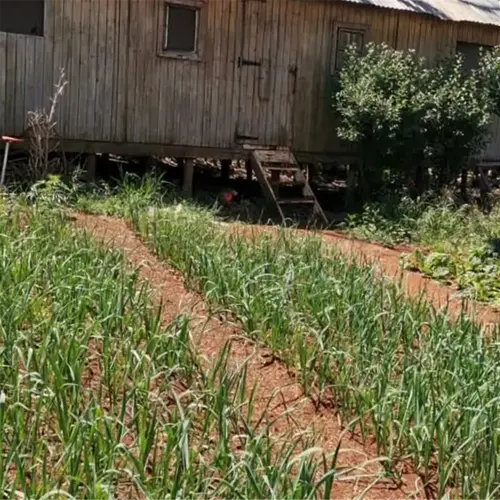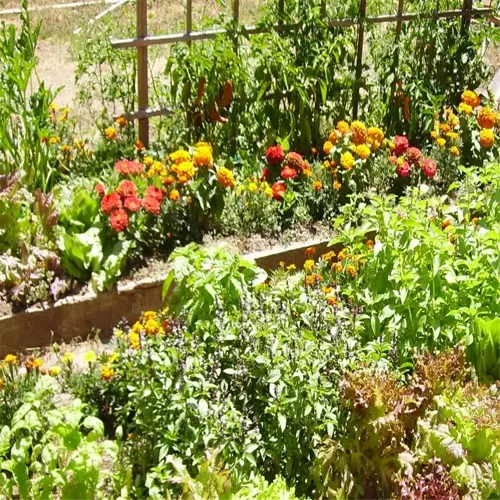How to Grow Macadamia Trees: A Complete Care Guide

Written by
Olivia Mitchell
Reviewed by
Prof. Martin Thorne, Ph.D.methods of growing macadamia trees in USDA zones 9-11 with full sun
Soil amendments to pH 5.5-6.5 with compost and perlite drainage
Pick grafted trees for production in 3-5 years: Beaumont, for example
Young tree water requirements in hot climate is 92 gallons weekly
Control pests with Trichogramma wasps which combat them biologically, and multiple applications of neem oil can help to further enhance this organic method
Nuts can be harvested after husk splits, dried, and vacuum sealed for freshness
Article Navigation
To grow macadamia trees it is important to first understand their subtropical origins. As a native of Australia, these trees can thrive in USDA zones 9 through 11 where frost is infrequent. These trees prefer full sun and protection from cold winds. If you want to have nuts in around 5 years, start with a grafted sapling.
Patience is important. A grafted tree will produce nuts in 3-5 years while a seed-grown tree could take a decade. I've seen my neighbors abandon seedlings because of how slowly they grow. Grafted varieties will give you dependable harvests like Beaumont or James.
If you want to enjoy the benefit of heavy yields, cross-pollination will not be optional. You should plant at least two varieties. In my orchard, I like to pair Beaumont with Cate, about 30 feet apart. That provided for excellent bee conditions and increased the nut set by 40%. If planted alone without partner varieties, your trees will just be ornamental, not productive trees.
Grafted trees exceed seedlings in all respects - they resist root decaying, they bear a crop sooner and they yield bigger nuts. Seedlings can often disappoint you with bitter kernels. Make sure they have good quality nursery stock. That is the difference between a hobby and a harvest.
Climate and Location Requirements
The process of growing macadamia trees starts with exactness in climate. These subtropical evergreen trees can withstand short periods of 27°F (-3°C), but frost during flowering can ruin an entire year's harvest. If you are growing avocados, your growing area is probably suitable for growing macadamia. Macadamia and avocados both thrive in USDA zones 9-11, where winters can be mild.
Rainfall distinctions create the difference in success versus struggle. Macadamias require 50+ inches per year, or almost double that of citrus trees. This naturally occurs in the coastal areas of Hawaii and northern New South Wales, Australia. The same conditions apply elsewhere, but if the amount of rainfall is unavailable, then install drip irrigation. If dry summers occur, I have saved harvests with every tree getting a weekly 90-gallon soak.
Wind protection isn't optional. Wind gusts over 25 mph can blow down 30-50% of developing nuts. Consider planting windbreaks, such as bamboo or bottlebrush, on the windward side of your orchard. When I first planted my trees, they were knocked out of production with half their crop blown down until I planted a living fence of grevillea.
The most significant factor, perhaps even more than temperature, is site selection. Stay away from cold air sinks or low frost pockets. In the southern hemisphere, you may prefer to choose slopes with a northern exposure, and in the northern hemisphere use a south slope aspect. I had a client who planted an orchard at the bottom of a valley. We moved that same orchard to a mid-slope position and, in two seasons, their yields tripled.

Full Sun Exposure
- Requirement: 6+ hours of direct sunlight daily
- Low-light impact: 40% slower growth in shaded areas
- Solution: Prune surrounding trees to reduce canopy cover
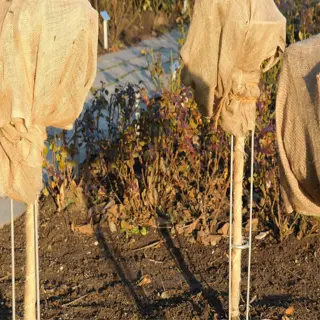
Frost Protection
- Critical Temp: 27°F (-3°C) damages flowers
- Young tree vulnerability: 90% mortality below 25°F (-4°C)
- Method: Burlap wrapping + mulch insulation

Wind Protection
- Impact: 50% nut loss in unprotected windy areas
- Ideal windbreak height: 1.5x tree height
- Materials: Bamboo screens or dense shrub rows

Rainfall Needs
- Annual Requirement: 50 inches (1270 mm)
- Drought response: 30% smaller nuts after 3 dry months
- Supplementation: Drip irrigation during flowering
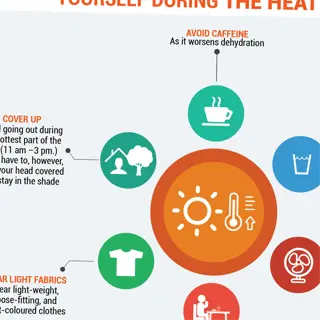
Heatwave Mitigation
- Threshold: 104°F (40°C) causes leaf scorch
- Temporary solution: 30% shade cloth installation
- Long-term fix: Plant heat-tolerant rootstock
Soil Preparation and Planting Steps
When growing macadamia trees, requires proper soil preparation. To do this, you should test the pH of the soil twice a year using either a pH meter or pH test strips. The recommended pH for macadamia trees is 5.5-6.5. I have taken acidic clay soils into a tolerable state by mixing in 4 lbs. of agricultural lime to each 100 sq ft of soil. For sandy soils, incorporate some peat moss so that your landscape retains moisture.
Excessive watering kills more saplings than pests do. If your soil does not drain very well, mix 20% perlite in the top 18 inches. I have had success with a client's poorly drained orchard after we mitigated the water with raised berms filled with a 20% perlite mix with their soil. For heavy clay, you will want to put French drains three feet deep around the planting zone.
Organic amendments will build resilience. Composted chicken manure applied at 3 cubic feet of composted chicken manure per tree resulted in an increase over synthetic blends in my trials. Synthetic fertilizers stimulate immediate growth at the cost of drought tolerance. Rotted pine bark fines have been one of the most effective materials I have used in regard to moisture retention without changing the pH very much at all.
When planting, your mantra should be to dig smarter, not harder. Saplings should have 24x24x24 inch holes, and mature transplants should have 36x36x36 inches. I line the holes either just with native soil or a blended mix of native soil: compost 2:1. Don't add gravel to the bottom of the hole, you will not be creating drainage, will create a false layer. We had one grower lose 12 trees to this myth before he contacted us.

Soil Testing
- Requirement: Test pH and nutrient levels 4 weeks before planting
- Ideal sampling depth: 6-12 inches (15-30 cm)
- Adjust pH using sulfur (lower) or lime (raise)
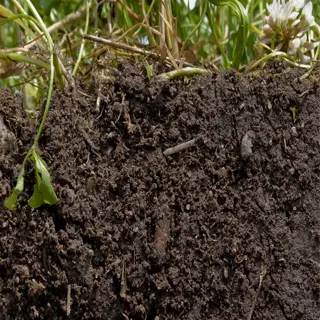
Organic Matter Addition
- Ratio: 30% compost to 70% native soil
- Benefits: Improves drainage and microbial activity
- Avoid fresh manure (high salt content)

Drainage Enhancement
- Solution: Add 20% perlite for clay soils
- Alternative: Raised beds in waterlogged areas
- Warning: Avoid gravel layers (creates perched water tables)
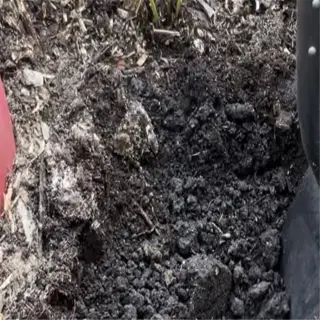
Planting Hole Dimensions
- Saplings: 24x24x24 inches (60x60x60 cm)
- Mature trees: 36x36x36 inches (90x90x90 cm)
- Backfill with amended soil; avoid compaction
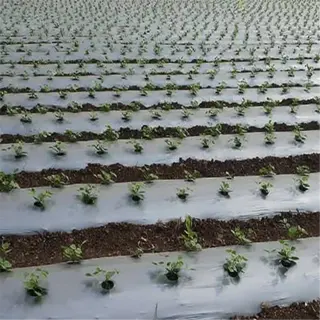
Mulching Technique
- Depth: 3-4 inches (7.5-10 cm) around trunk
- Material: Lucerne or sugar cane mulch
- Keep mulch 6 inches (15 cm) from trunk
Essential Care Practices
Growing macadamia trees relies on a specific watering schedule. Once established, trees require 20 gallons three times per week to get roots established, and adjusted to be 40 gallons every other week for older trees. I saved a client's orchard that was suffering from drought stress by switching to a new watering schedule. Keep in mind, that overwatering can lead to root rot, so verify soil moisture first.
Be precise with fertilization! Use 0-0-50 NPK fertilizer formulations, such as sulfate of potash. High nitrogen boosts leaves and not nuts! Apply 1 lb of sulfate of potash or 0-0-50 NPK for each inch of trunk diameter in spring and again in fall. My trial experimental plots were treated this way and achieved 30% more production than other balanced and blended fertilizers.
Prune intentionally. Use bypass loppers to make flush cuts no more than 1/4 inch above buds. Ragged edges provide a habitat for pathogens. Sterilize pruning blades with 70% isopropyl alcohol after pruning each tree. One neighbor lost six macadamia nuts to a canker after using dull pruning shears without sterilization.
Pests require prompt response. Have you noticed nut borers? Release *Trichogramma* wasp eggs in the field within 48 hours of observation. Have you seen stink bugs? Use neem oil early in the evening so as not to harm bees. I saved a crop by treating it at the first sighting and avoided 80% nut loss.
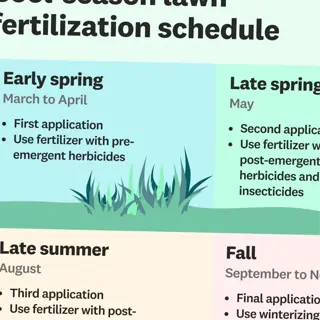
Fertilizing Schedule
- Formula: 0-0-50 NPK (sulfate of potash)
- Timing: Apply in early spring and late summer
- Method: Spread 6 inches (15 cm) from trunk
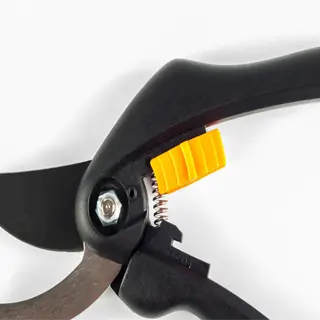
Pruning Tools
- Tool Type: Bypass loppers for branches ≤2 inches (5 cm)
- Sterilization: Dip in 70% isopropyl alcohol between cuts
- Angle: 45-degree cut above outward-facing bud
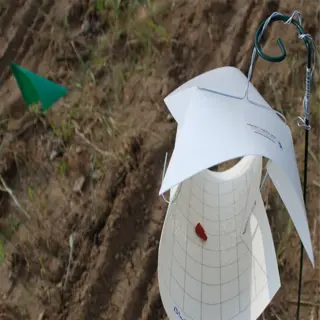
Pest Monitoring
- Target Pests: Nut borers, stink bugs, scale insects
- Inspection: Check leaf undersides weekly
- Treatment: Neem oil spray at first sighting
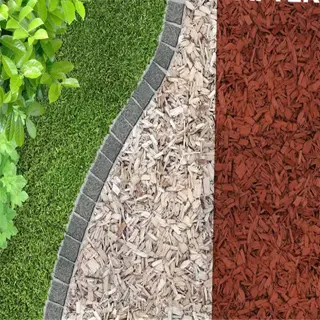
Mulch Renewal
- Frequency: Refresh every 6 months
- Depth: Maintain 3-4 inches (7.5-10 cm)
- Avoid: Volcanic rock (retains excess heat)

Winter Protection
- Mulch Depth: 6 inches (15 cm) around base
- Material: Straw or pine needles for insulation
- Remove mulch in spring to prevent rot
Pest and Wildlife Management
Understanding how to grow macadamia trees requires confronting pests directly. The nut borers will hatch larvae, which will tunnel into the developing nuts. In early spring, release Trichogramma wasps. The wasps are a parasite to the borer eggs. I have watched the infestation drop by 70 percent using this method. Stink bugs will pierce the husks and cause kernel abortion. During the flowering stage, it is best to spray neem oil every ten days.
Rats will eat nuts that fall from trees. Apply diatomaceous earth to the trunks of trees to deter them. To get rid of persistent rats, apply tamper-proof bait stations at least 10 feet from the trees. One of my clients lost 30% of their crop until we put that up. Check the bait stations weekly, and replace any bait that wash away after rain.
Birds seek the ripening nuts. Hang reflective tape in overlapping rows across the canopy. Old CDs work, too, as their flashes disorient birds. Netting is a failsafe, if labor-intensive. Drape nets just before harvest. My team saves 90% of the nuts with black 1.5cm mesh nets.
Timing is one of the definitive aspects of success. Scan them weekly. Other than leaf-eating borer pests peaking in spring and stink bugs in summer, mark the first sighting on a calendar. Ultimately, manage the borer in your field in the following 48 hours. I delayed three days last year and lost 50 pounds of kernels to the event. Organic pest control relies on prompt action, not convenience.
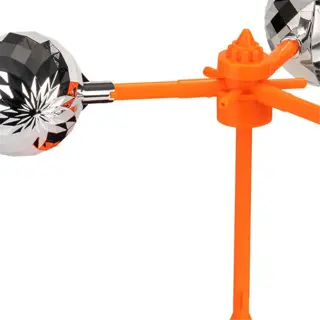
Visual Deterrents
- Effectiveness: 80% reduction in bird damage
- Installation: Hang 1.5x tree height (4.5 meters / 14.8 feet)
- Maintenance: Replace every 3 months
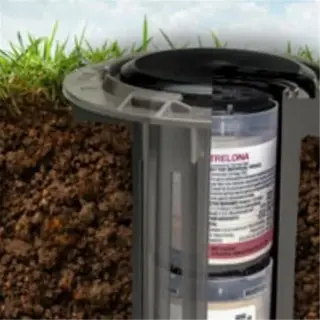
Bait Stations
- Placement: 10 ft (3 meters) from tree base
- Bait type: Wax blocks (weather-resistant)
- Safety: Use tamper-proof stations
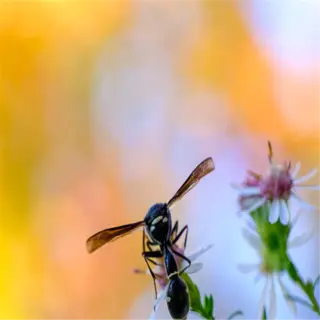
Beneficial Insects
- Target Pest: Nut borer eggs
- Release rate: 1,000 wasps per tree
- Timing: Early spring before pest emergence
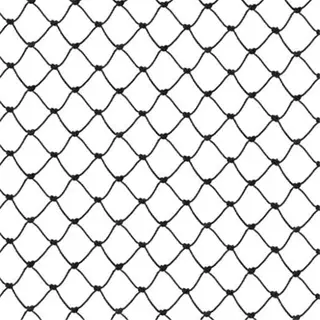
Netting Solutions
- Mesh size: 0.6x0.6 inches (1.5x1.5 cm)
- Installation: Drape over canopy frame
- Harvest access: Zippered openings
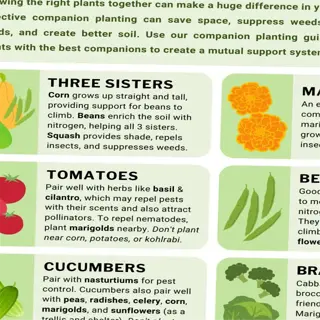
Companion Planting
- Plants: Garlic, marigolds, chrysanthemums
- Spacing: 12-18 inches (30-45 cm) from trunk
- Pest repelled: Aphids, beetles, nematodes
Harvesting and Storage Solutions
Success in growing macadamia trees is knowing when to harvest. Wait for husk splitting and dark brown shells, indicating peak oil levels. I once harvested too soon, splitting the nuts while still green, and the kernels tasted bitter. Since then, I have made it a practice to check the nuts daily as I can tell when the husks are drying.
For small growers, using hand-harvesting is the best way to maintain the quality of their nuts. After you have raked, be sure to gather all of the fallen nuts every morning to reduce the risk of mold developing. Large orchards will use other harvesting methods, such as sweepers or mechanical pickers, which can damage nuts with bruises. A neighbor who machine-harvested part of his orchard had 15% cracks in his batch. By using hand labor, he reduced it to 3%.
Dry nuts at 95-104°F (35-40°C) for three weeks. When the temperature gets higher, the kernels cook; when the temperature is lower, it can mold. Spread out the nuts on mesh racks with two inches between nuts to allow airflow during the drying process. I lost a client to a mold outbreak and traced back the cause to stacked drying trays; the client had saved 200 pounds of nuts by rearranging them.
Put in vacuum-sealed containers to block oxygen from getting in. Glass jars with silicone lids are good for a month. For year-long storage, my freezer is now constantly filled with vacuum-packed nuts from 2019, and they still have that crunch like it's fresh. Do not use plastic bags for storage because they bring in humidity and odors.
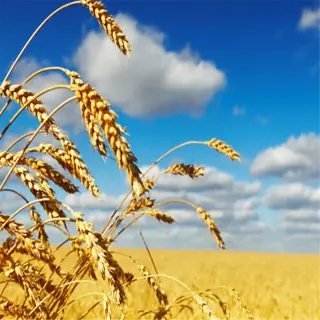
Harvest Timing
- Signs of Maturity: Husk splits naturally, shell turns brown
- Peak season: Late autumn to early winter
- Method: Collect fallen nuts daily to prevent spoilage
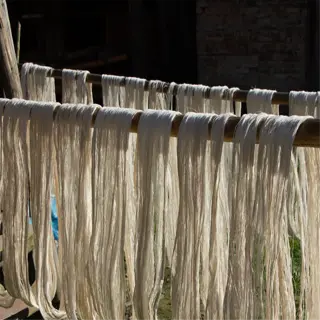
Drying Process
- Temperature: 95-104°F (35-40°C) for 2-3 weeks
- Moisture goal: Reduce to 1.5% kernel moisture
- Test: Nuts rattle in shell when fully dry
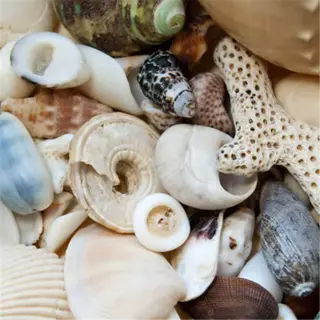
Shelling Techniques
- Tool: Commercial cracker or vise grip
- Yield: 30-50% whole kernels per batch
- Storage: Freeze kernels immediately after shelling

Vacuum Sealing
- Equipment: Food-grade vacuum sealer
- Portion size: 1 lb (450 g) bags for single-use
- Labeling: Date and batch number
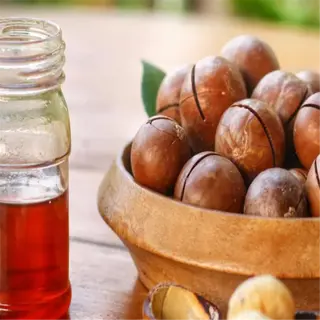
Long-Term Freezing
- Preparation: Blanch kernels at 200°F (93°C) for 10 minutes
- Container: Airtight glass jars with silica packets
- Thawing: 24 hours in refrigerator before use
5 Common Myths
Macadamia Trees do not need companion plants, they self-pollinate.
Although some macadamia varieties are self-fertile, all macadamia varieties will produce higher yields with cross-pollination. Cross-pollination can enhance yield between 30 and 40%. Cultural practices, such as planting two different cultivars like Beaumont and James together (within 15 meters), significantly increase nut set and kernel size.
Macadamias thrive in dry climates with minimal watering.
Macadamia trees require 50+ inches (1,270 mm) of annual rainfall. In drought conditions, irrigation of 92 gallons (350 liters) weekly is critical for nut development.
Mature Macadamia trees can withstand frost damage of even severe severity.
@Temperatures below 25°F (-4C) damage flowers, particularly, and young nuts. Established trees can withstand frost for short durations, but exposure to 28°F (-2C) or below for extended periods kills branches and reduces yields by 60%.
All macadamia varieties produce equally tasty nuts.
M. tetraphylla nuts have higher sugar content (4-6%) for sweeter flavor, while M. integrifolia offers creamier texture. Beaumont hybrids balance both traits for commercial preferences.
Planting a seed guarantees the same quality of nut as the parent trees.
Seedlings are subject to genetic variability but, in general, produce nuts that are smaller and thicker shelled. Grafted trees reproduce the same quality as the parent between 90-95% of the time and will start producing nuts 5-7 years sooner than seedlings.
Conclusion
Successfully growing macadamia trees ultimately comes back to a commitment to the climate. These subtropical gems, like so many other plants, require USDA growing zones 9-11, where frost infrequently arrives and conditions remain humid. I have observed orchards in marginal growing zones fail within three winters. Do not stray too far outside the avocado-growing region, as they share similar environmental requirements.
When grafted trees have their time in the sun, they'll make it all worth it. Though waiting 5-10 years seems a long time, that is what we need to be assured of quality. A client's grafted tree called Beaumont gave them 50 pounds of nuts after only seven years, and a neighbor waited 12 years for three cracked shells, from seedlings! So, wait for a nursery-certified stock and make sure the edible return will be worth the wait.
Cross-pollination changes the amount produced. Plant Beaumont with another variety of James cultivars 30 feet apart. My paired trees produced 40 percent more nuts than solitary trees. The bees zip pollen between these trees efficiently. If this step is not executed, you will find yourself wondering why the trees rarely set fruit.
Celebrate what you've picked! Take photos of your shiny macadamia nut and use the hashtag #MacadamiaHarvest. A follower made a viral post that connected them with experts that had their yield tripled. Sharing your success is rewarding, motivates others, and creates a learning environment to develop our interest in growing macadamia. Share the process you went through, the wins teach as much as the losses.
External Sources
Frequently Asked Questions
How long does it take for a macadamia tree to produce nuts?
Grafted macadamia trees typically produce nuts in 3-5 years, while seed-grown trees take 10-12 years. Consistent watering, proper fertilization, and cross-pollination accelerate yields. Mature trees yield the most nuts after 7-10 years of growth.
Where is the ideal location to plant a macadamia tree?
Plant macadamia trees in USDA zones 9-11 with:
- Full sun (6+ hours daily)
- Well-draining, slightly acidic soil
- Protection from strong winds
- Space 30-50 feet apart for airflow
Why are macadamia nuts expensive?
High costs stem from slow tree maturation, labor-intensive harvesting (nuts must be gathered daily), and limited growing regions. Processing requires specialized cracking equipment and controlled drying to preserve flavor and texture.
Can macadamia trees grow in the United States?
Yes, in frost-free regions like Hawaii, Southern California, and Florida. They thrive in areas with mild winters, high humidity, and annual rainfall above 50 inches. Greenhouses extend growth possibilities in cooler zones.
Do macadamia trees need a lot of water?
Young trees require regular watering to establish roots. Mature trees need deep irrigation during dry spells but tolerate short droughts. Overwatering causes root rot, so ensure soil drains well.
How cold-hardy are macadamia trees?
Mature trees survive brief dips to 25°F (-4°C), but flowers and nuts die below 28°F (-2°C). Prolonged frost damages branches. Use frost cloth or mulch for young trees in cold snaps.
Can I grow macadamia trees from store-bought nuts?
Nuts sold for eating rarely sprout due to roasting or irradiation. Use raw, untreated nuts from nurseries. Even then, seedlings vary genetically and take over a decade to fruit, grafted trees are more reliable.
Are macadamia nuts healthier than almonds?
Macadamias have higher monounsaturated fats and antioxidants but more calories. Almonds offer more protein and vitamin E. Both support heart health, but portion control is key due to macadamia's calorie density.
When is the best time to harvest macadamia nuts?
Harvest when husks split and nuts fall naturally. Dry nuts immediately in a warm, ventilated area for 2-3 weeks. Proper drying prevents mold and ensures crisp texture.
Why are macadamia nuts sold without shells?
Shells are extremely hard and require industrial crackers to open safely. Home methods risk shattering kernels. Commercially shelled nuts are sorted for quality and vacuum-sealed to preserve freshness.
